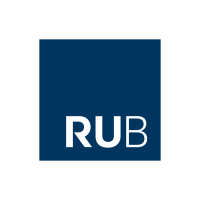We report first ns-resolved absorption measurements of the ro-vibrational excitation of CO2. The high temporal resolution of 8 ns is made possible by a fast detector (rise-time 5 ns), sensitive in the mid-infrared region. The resolution is achieved by a slow temperature scan of a quantum cascade laser and a segmented data capturing scheme. A repetitively pulsed ns discharge in 10% CO2 + 90% He at 150 mbar and a repetition rate of 2 kHz is investigated. The evolution of the population densities of the different vibration modes as well as the associated vibrational and rotational temperatures within the discharge pulse of only 150 ns length are simultaneously determined and provide valuable insight into the CO2 excitation dynamics. A preferential excitation in the asymmetric vibrational mode is observed in the discharge phase shortly after the breakdown.
| Field | Value |
|---|---|
| Publisher | |
| Authors | |
| Release Date | 2022-02-14 |
| Identifier | 1188f8c5-8da3-4d93-801b-37b9e7d40778 |
| Permanent Identifier (URI) | |
| Is supplementing | |
| Plasma Source Name | |
| Plasma Source Application | |
| Plasma Source Specification | |
| Plasma Source Properties | The applied voltage by the DC high voltage generator is 2.25 kV with a voltage pulse length of 150 ns and a repetition rate of 2 kHz. The measured voltage at the powered electrode and current waveforms are shown in the publication (J. Phys. D: Appl. Phys. 54 (2021) 34LT02). The voltage rise time from 10% to 90% amplitude is 13 ns.
(Note: the original entry has been lost and the values here are restored by memory) |
| Language | English |
| License | |
| Plasma Medium Name | |
| Plasma Medium Properties | 10% CO2+He gas mixture, total flow rate: 30 sccm, pressure: 150 mbar
(Note: the original entry has been lost and the values here are restored by memory) |
| Contact Name | Yanjun Du |
| Contact Email | |
| Plasma Diagnostic Properties | A single-mode continuous-wave QCL (Alpes) with a coverage from 2276 to 2290 cm−1 was used to scan the CO2 absorption transitions. The collimated output of the laser is guided in and out of the discharge chamber through two inserted wedged CaF2 windows to reduce the CO2 absorption outside of the discharge along the beam pass. A combination of a polarizer and a quarter-waveplate is used to adjust the laser intensity to avoid saturation. Two irises help to prevent potential etalon effects in the optical pass by shielding the back reflection from the beam splitter and the CaF2 windows. After traversing the discharge chamber, the laser beam is focused onto a DC coupled photovoltaic detector (Vigo, PVI-3TE-5, bandwidth 1 MHz) by an off-axis parabolic mirror. A narrow bandpass filter (Thorlabs, FB4250-500) and a third iris are mounted in front of the detector to reduce the infrared thermal emission from the discharge. The laser frequency is characterized by a silicon Fabry–Perot interferometer (LightMachinery) with a free spectral range of 0.0176 cm−1 mounted on a flipping mount.
(Note: the original entry has been lost and the values here are restored by memory) |
| Public Access Level | Public |
| Plasma Diagnostic Name | |
| Funding Agency | |
| Project | |
| Subproject |


![[Open Data]](https://assets.okfn.org/images/ok_buttons/od_80x15_blue.png)